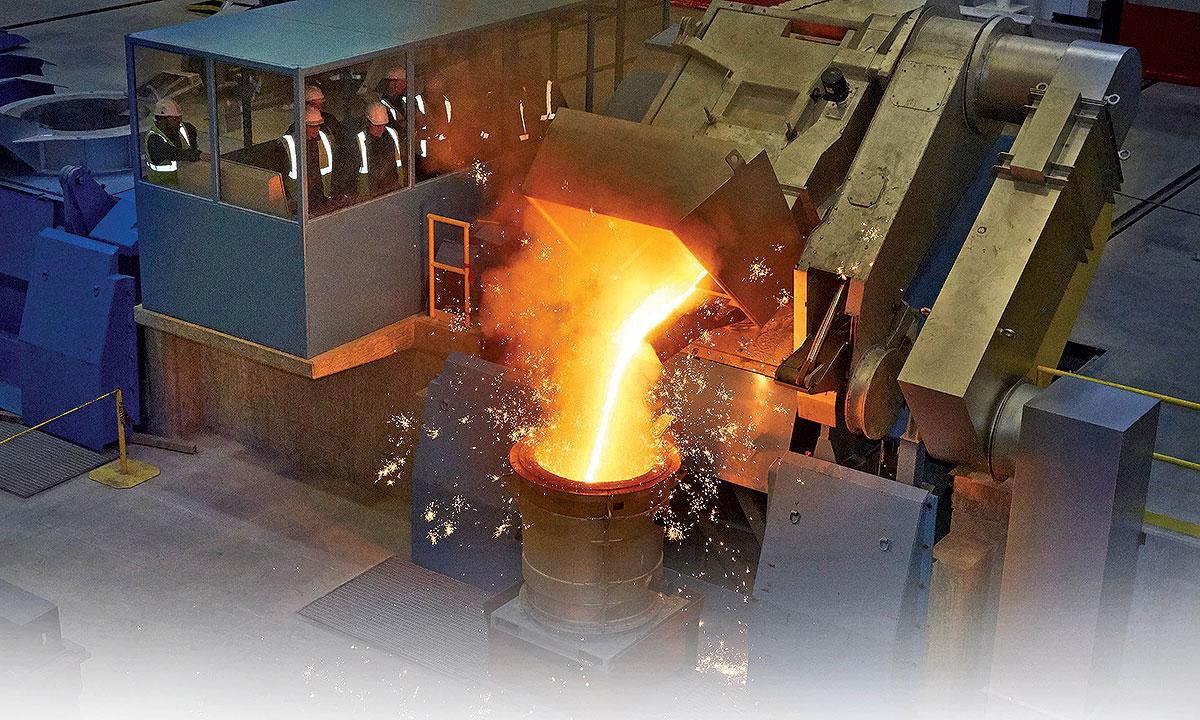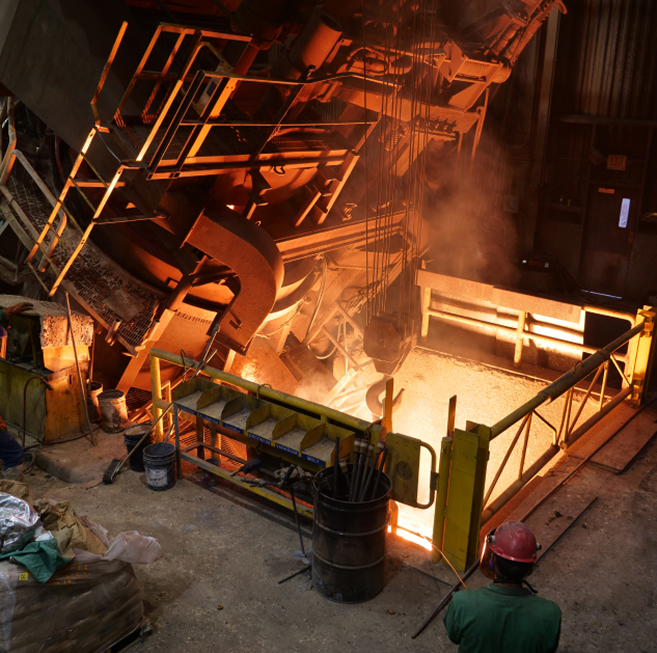Best Practices to Achieve High-Quality Aluminum Casting Results
Wiki Article
Checking out the Art of Metal Casting: Strategies and Applications in Modern Foundries
Metal casting is a time-honored craft that integrates virtuosity with design precision. From ancient methods to contemporary innovations, this process has actually progressed substantially. Numerous approaches, such as sand casting and lost-wax casting, showcase the versatility of the tool. Advancements like 3D printing are improving exactly how shops operate. As the lines in between performance and creativity blur, one should take into consideration exactly how these growths effect both standard techniques and modern applications. What lies ahead in this advancing landscape?The Fundamentals of Metal Casting
Metal casting, an essential procedure in production, includes pouring molten metal right into a mold and mildew to accomplish a preferred form. This technique offers as a structure in the manufacturing of complex metal components throughout numerous industries. Crucial element of metal casting include the option of materials, which can range from aluminum to steel, each selected for its certain properties and application viability. The process starts with mold and mildew creation, which can be made from sand, steel, or ceramics, relying on the casting technique used. The molten steel is after that very carefully put right into the mold, where it cools down and strengthens. Essential aspects such as temperature control, cooling down price, and mold style substantially influence the end product's top quality and characteristics. In addition, understanding the physical and chemical homes of the metal help in enhancing casting efficiency, inevitably enhancing the efficiency of the manufacturing process and ensuring premium outcome tailored to certain demands.Traditional Casting Strategies
Traditional casting strategies incorporate a selection of approaches that have stood the examination of time, showing their performance in producing elaborate metal elements. One popular technique is sand casting, which utilizes a blend of sand and a bonding representative to develop molds. The convenience of sand casting enables the manufacturing of diverse forms, making it suitable for both small-scale and large manufacturing. An additional notable strategy is investment casting, frequently made use of for precise and complicated geometries. This approach entails creating a wax pattern that is covered in a ceramic shell, which is then heated up to remove the wax, leaving a tooth cavity for molten steel. In addition, die casting is utilized for high-volume manufacturing, where liquified metal is infused into reusable steel mold and mildews. Each of these conventional strategies stays pertinent, showcasing the craftsmanship and ability inherent in the art of steel casting, while meeting the needs of numerous sectors.Modern Innovations in Metal Casting
As sectors evolve, innovations in metal casting are reshaping manufacturing procedures and boosting effectiveness. Advanced innovations such as 3D printing and computer-aided layout (CAD) are reinventing mold production, enabling elaborate layouts that were formerly unattainable. These techniques promote rapid prototyping, minimizing lead times and fostering imagination in item development.Furthermore, the integration of automation and robotics in factories is enhancing operations, minimizing human error, and increasing safety. Smart sensing units and real-time monitoring systems allow accurate control of temperature level and product residential or commercial properties, making certain better outcomes.
Furthermore, lasting methods are arising, with the usage of recycled products and energy-efficient heaters, reducing ecological effect. The fostering of composite products and innovative alloys is additionally increasing the possibilities of metal casting, resulting in stronger and lighter parts. In general, these contemporary advancements are transforming steel casting into a more reliable, precise, and eco accountable market.
Applications Throughout Various Industries

While diverse markets significantly rely upon metal casting, the method's versatility plays an important duty in meeting particular application requirements. In the automotive field, metal casting is important for creating engine components, transmission real estates, and other intricate components that call for accuracy and durability. The aerospace market take advantage of light-weight casted components, making sure both efficiency and gas effectiveness. In addition, the building market utilizes steel casting for structural aspects, such as beams and supports, boosting the integrity of bridges and structures.
Furthermore, the energy sector utilizes metal casting for turbine blades and various other significant equipment that have to hold up against extreme problems. Clinical tools also see applications of steel casting, particularly in surgical tools and prosthetics, where accuracy is essential - Aluminum Foundry. Overall, the convenience and dependability of metal casting make it indispensable across different areas, adding to the improvement of innovation and infrastructure in modern culture
The Artistic Side of Metal Casting
Although typically related to commercial applications, metal casting likewise finds its area in the domain of art, where skilled artisans change liquified metal right into expressive sculptures and intricate designs. This creative side of metal casting encompasses diverse methods, consisting of sand casting, lost-wax casting, and financial investment casting, each offering unique opportunities for imagination. Musicians utilize these approaches to create works that range from abstract forms to lifelike representations, permitting for personal expression and commentary on modern issues.
Often Asked Inquiries
What Precaution Are Important in a Metal Casting Factory?
Crucial safety and security actions in a steel casting shop include individual safety devices, appropriate air flow, emergency situation protocols, training in dealing with molten steels, normal tools upkeep, and clear interaction of risks to ensure worker safety and wellness. Metal Casting.How Do Ecological Laws Influence Metal Casting Processes?
Environmental policies substantially affect steel casting processes by mandating making use of cleaner innovations, lowering discharges, and promoting waste administration practices. Conformity frequently needs financial investments in tools, training, and modifications to existing treatments to decrease environmental influence.Aluminum Foundry
What Are the Usual Issues in Metal Castings?
Typical problems in metal spreadings consist of porosity, shrinkage, incorporations, and misruns. These issues can occur from inappropriate mold and mildew design, inadequate temperature control, or contamination, inevitably affecting the structural honesty and total top quality of the end product.Just How Is Waste Managed During Metal Casting Production?
Waste management in metal casting manufacturing involves reusing scrap metal, carrying out reliable material usage, and using advanced modern technologies to lessen waste. Foundries adopt practices like sand improvement and appropriate disposal methods to minimize environmental effect.What Profession Opportunities Exist in the Metal Casting Sector?
The steel casting sector supplies varied career opportunities, including duties such as factory manager, metallurgical engineer, top quality control inspector, pattern maker, and manufacturing manager, accommodating numerous ability collections and know-how in making processes.Metal casting, a crucial procedure in manufacturing, includes pouring liquified steel into a mold to attain a preferred shape. In addition, pass away casting is utilized for high-volume manufacturing, where molten steel is infused right into multiple-use metal mold and mildews. While varied markets progressively count on steel casting, the technique's adaptability plays a crucial duty in meeting specific application needs. Usually connected with industrial applications, metal casting likewise finds its location in the domain name of art, where skilled artisans change molten metal right into meaningful sculptures and complex styles. Waste administration in metal casting manufacturing involves reusing scrap steel, carrying out reliable material usage, and utilizing advanced innovations to decrease waste.
Report this wiki page